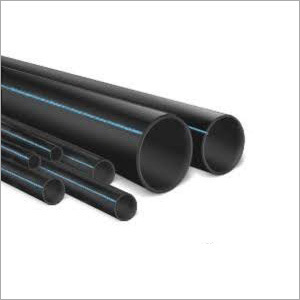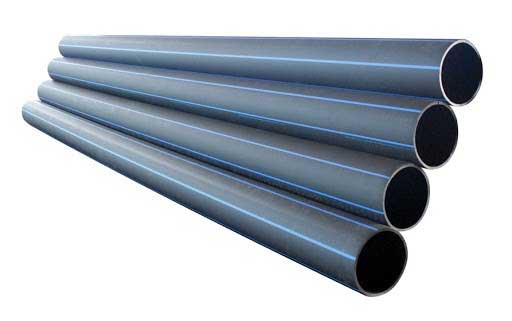Where Contractors Can Get Midland TX HDPE Pipe Fittings in Stock for Construction Projects
Explore the Production Process Behind High-Quality HDPE Pipeline and Its Applications
The manufacturing procedure of high-quality HDPE pipes is elaborate and methodical. It starts with the option of raw products that boost performance. Following this, ethylene undergoes polymerization to create resin, which is after that formed via extrusion. Quality assurance is extremely important, making sure that the final product meets rigorous requirements. Nonetheless, the journey of HDPE pipes does not finish with production. Their applications across various industries disclose a more comprehensive significance worth analyzing.
Comprehending HDPE: Properties and Advantages

High-density polyethylene (HDPE) is a flexible polycarbonate known for its longevity and resistance to various environmental aspects. This product displays outstanding tensile toughness, making it appropriate for requiring applications. Its low-density framework adds to a lightweight product, assisting in simplicity of handling and setup. HDPE additionally showcases impressive resistance to chemicals, which decreases destruction when revealed to extreme compounds.
The material's low moisture absorption even more improves its longevity, making it optimal for use in pipelines and tank. In addition, HDPE is immune to ultraviolet (UV) radiation, ensuring that products maintain their integrity also when subjected to sunlight. Its versatility allows for the production of elaborate shapes without compromising toughness. The green nature of HDPE, commonly acquired from recycled materials, includes to its charm, promoting lasting practices in manufacturing. Overall, these residential properties and benefits make HDPE a recommended selection for numerous industrial and customer applications.
Resources Choice for HDPE Manufacturing
The selection of resources for HDPE production is vital to confirm the end product fulfills the preferred requirements and high quality criteria. High-density polyethylene (HDPE) is primarily created from polymerized ethylene, derived from fossil fuels such as gas or unrefined oil. The high quality of these feedstocks significantly affects the mechanical and thermal homes of the last HDPE.
Additives additionally play a significant function in boosting HDPE's performance, including antioxidants, UV stabilizers, and colorants, which boost toughness and resistance to ecological factors. The choice procedure should think about not just the chemical composition of the raw materials however likewise their handling qualities to assure efficient production.
Furthermore, the sourcing of basic materials need to prioritize sustainability and compliance with ecological regulations, as accountable methods are crucial in today's market. Eventually, mindful resources option lays the structure for generating high-quality HDPE pipes ideal for diverse applications.
The Extrusion Process: Forming HDPE Pipeline
The extrusion procedure plays an important role fit HDPE pipelines, beginning with thorough product prep work methods that guarantee excellent circulation and uniformity. Just as vital is the layout of the die, which directly affects the last dimensions and surface high quality of the pipeline. With each other, these factors contribute substantially to the effectiveness and top quality of HDPE pipe production.
Product Preparation Techniques
Efficient manufacturing of HDPE pipelines begins with thorough product prep work methods, particularly the extrusion process. During this phase, high-density polyethylene resin is very first dried to get rid of wetness, guaranteeing optimal circulation attributes. The resin is after that fed into the extruder, where it undergoes home heating and melting, changing into a thick state. This heating process is carefully managed to preserve the product's integrity and efficiency. The molten HDPE is forced with a die, forming it right into a continual pipe type. Correct temperature administration during extrusion is essential, as it directly influences the product's residential properties and the last item high quality. Once formed, the HDPE pipeline is cooled down and reduced to defined lengths, ready for subsequent processing and applications.
Die Design Relevance
Precision in die design plays an important role in the extrusion process of HDPE pipes. The die acts as the last shaping tool, directly influencing the pipeline's measurements, wall thickness, and surface area finish. A well-designed die guarantees uniform material circulation, minimizing problems such as abnormalities and weak areas. The geometry of the die need to be enhanced to fit the details residential or commercial properties of HDPE, including its thickness and thermal behavior throughout extrusion. Additionally, the cooling rate of the product as it passes with the die can considerably impact the pipeline's architectural integrity. Spending in sophisticated die technology is crucial for makers aiming to produce top notch HDPE pipes that meet market requirements and customer assumptions.
Top Quality Control Steps in HDPE Manufacturing
Numerous variables influence the quality of HDPE pipe production, efficient high quality control procedures are essential to guarantee uniformity and dependability in the last item (American Plastics HDPE Pipe Manufacturing). Trick quality control methods include extensive material examination, verifying that the raw polyethylene fulfills well-known criteria for purity and thickness. During the extrusion process, parameters such as temperature level, stress, and cooling time are very closely checked to maintain dimensional precision and architectural integrity
On top of that, post-production testing is essential; makers often perform hydrostatic tests to evaluate the pipeline's strength and resistance to pressure. Aesthetic evaluations for surface area problems additionally enhance quality assurance. Qualification from relevant requirements organizations, like ASTM or ISO, gives an added layer of integrity. By executing these extensive quality control procedures, manufacturers can reduce issues, improve performance, and guarantee that the HDPE pipelines meet the specific requirements of different applications, inevitably leading to client fulfillment and count on in the item.
Applications of HDPE Pipeline Throughout Industries
HDPE pipes are made use of across various fields due to their longevity and adaptability. In water circulation systems, they assure reliable shipment, while in wastewater monitoring, they provide trustworthy solutions for waste transport. Furthermore, farming watering networks gain from HDPE's resistance to rust and versatility, making it an excellent option for contemporary farming techniques.

Water Circulation Solutions
A significant number of markets count on high-density polyethylene (HDPE) pipes for effective water circulation systems. Known for their toughness and resistance to deterioration, HDPE pipes are extensively utilized in local water system networks, farming irrigation, and commercial applications. Their light-weight nature promotes easy handling and setup, lowering labor costs and time. Additionally, HDPE pipes can suit numerous pressure levels, making them appropriate for both low and high-pressure systems. Midland TX HDPE Pipe Fittings in Stock. The versatility of the product permits seamless assimilation into existing framework, minimizing the demand for comprehensive excavation. Moreover, HDPE's resistance to chemical seeping guarantees that the water provided continues to be secure and clean, making it a suitable option for keeping the quality of potable water across different markets
Wastewater Administration Solutions
Effective water distribution systems additionally lead the way for cutting-edge wastewater management services, where high-density polyethylene (HDPE) pipelines play a substantial role. Renowned for their review resilience and resistance to deterioration, HDPE pipelines are optimal for delivering wastewater in various settings. Their adaptability allows for simple installation in complicated settings, minimizing the requirement for considerable excavation. Furthermore, HDPE's smooth indoor surface minimizes rubbing, improving circulation rates and performance. These pipelines are likewise immune to chemical leaching, guaranteeing that impurities do not jeopardize the surrounding environment. Industries, municipalities, and treatment centers significantly count on HDPE pipelines for their dependability and longevity, making them a recommended option for modern wastewater management systems. This flexibility highlights the essential value of HDPE pipelines throughout countless applications.
Agricultural Irrigation Networks
Agricultural watering networks profit greatly from using high-density polyethylene (HDPE) pipes, which supply efficient and dependable water shipment to crops. HDPE pipes are lightweight, making them very easy to transfer and mount, while their adaptability permits numerous setups in diverse terrains. These pipelines demonstrate excellent resistance to rust, chemicals, and UV radiation, making certain resilience in harsh farming atmospheres. Additionally, their smooth indoor surface area lessens friction loss, optimizing water flow and decreasing power expenses connected with pumping. The long life of HDPE pipes, commonly surpassing half a century, contributes to lower upkeep and substitute costs. As a result, farmers increasingly count on HDPE pipelines to enhance watering efficiency and promote lasting farming techniques, inevitably causing enhanced crop yields and resource preservation.
Future Trends in HDPE Pipe Innovation
As the need for lasting and reliable infrastructure expands, developments in HDPE pipe technology are poised to transform different markets. Emerging fads consist of the combination of smart modern technologies, such as sensing units and IoT capacities, which assist in real-time monitoring of pipeline problems, decreasing maintenance expenses and protecting against leaks. Additionally, the growth of advanced manufacturing techniques, such as 3D printing, is enabling the manufacturing of complex, personalized pipe layouts that cater to specific task demands.
Additionally, the focus on recycling and round economy techniques is driving the innovation of HDPE pipelines made from recycled materials, improving sustainability. Enhanced jointing techniques, such as electro-fusion and mechanical installations, are likewise improving installation performance and dependability. Lastly, the growing focus on ecological laws is pushing makers to embrace greener manufacturing processes, making sure that HDPE pipes not just meet industry requirements yet likewise cultivate a more lasting future for infrastructure growth.
Often Asked Inquiries
Just How Does HDPE Compare to Various Other Plastic Materials?
HDPE exceeds lots of various other plastic products concerning find more info durability, chemical resistance, and adaptability. Its reduced thickness and high tensile strength make it optimal for different applications, commonly going beyond alternatives in both efficiency and long life.
What Are the Ecological Influences of HDPE Production?
The ecological influences of HDPE manufacturing consist of greenhouse gas emissions, power intake, and possible air pollution from making procedures. Furthermore, improper disposal can lead to dirt and water contamination, elevating issues regarding lasting ecological results.
Can HDPE Piping Be Reused?
Yes, HDPE pipes can be recycled. Many centers approve utilized HDPE for handling, changing it into brand-new items. This recycling adds to sustainability efforts, hop over to these guys decreasing plastic waste while conserving sources and energy in the manufacturing cycle.
What Is the Life-span of HDPE Pipeline?

Exactly How Do Temperature Variants Influence HDPE Pipeline Performance?
Temperature variations considerably affect HDPE pipeline efficiency, affecting versatility and strength. Heats can result in softening, while reduced temperature levels may create brittleness, ultimately influencing the pipe's durability and viability for various applications in varied atmospheres.